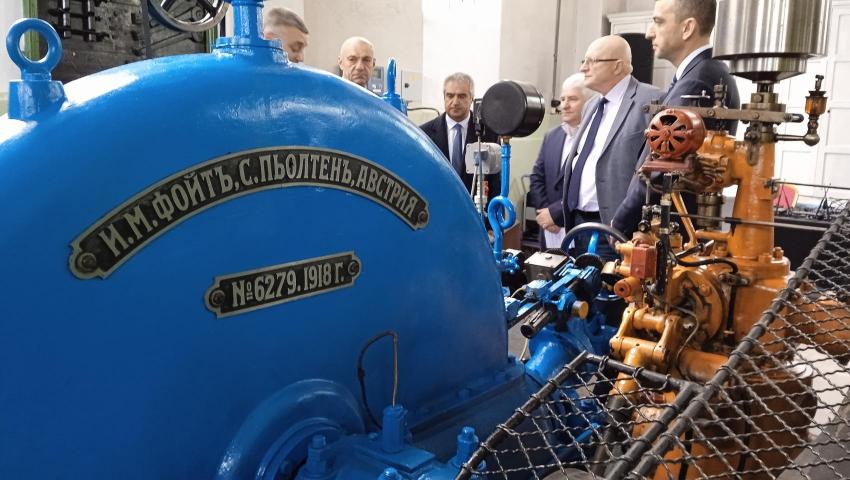The 100-year-old Voith turbines at the Boyana HPP continue to operate without fail

The Boyana HPP, equipped with turbines manufactured by the Austrian subsidiary of the Voith company, have been working without fail for 100 years. The main parts of them are from the beginning of the plant's operation in 1918, when the turbines themselves were produced. The story of a hydroelectric power plant operating with century-old equipment cannot but be impressive, especially through the accounts of people who have dedicated decades of their lives to the profession.
"This is one of the first hydroelectric power plants in the country and the Bulgarian energy workers deserve admiration for the courage to start this project, for its completion, despite the difficulties, and for the fact that it continues to function to this day," he commented when marking the 100th anniversary from the Boyana HPP, the executive director of the National Electric Company (NEC), Martin Georgiev. He also drew attention to the fact that the name of the famous company Voith is written on one of the turbines in Bulgarian.
In fact, the supply for the Boyana HPP comes from Voith's first Austrian subsidiary in St. Pölten, Austria. It is known, for example, that 1870 Maschinenfabrik J.M. Voith begins construction of 100 PS-Henschel-Jonval turbines. Two years later the company built the first Francis turbine, an American invention that was greatly improved in design and efficiency by Friedrich Voith, his engineers and associates. Voith makes a huge contribution to the paper industry, shipping and rail transport sector.
The plant has a truly remarkable history, Georgiev also pointed out, focusing on the idea from the distant 1891-1892, the passage through various setbacks until the implementation of the project and its start-up and its connection to the electricity supply network of Sofia on December 13, 1923.
This event gives a big impetus to the development of the city and raises it to a higher level. The benefit to society is also great through so far electrification, powering street lighting and also the first trams.
The Boyana HPP is one of the most valuable operating assets of the National Electric Company, pointed out the Minister of Energy Rumen Radev, who turned out to be among the few who know not only the history, but also the idea of the construction of the Boyana HPP.
"The power plant as a concept was conceived with the rather ambitious idea of collecting the waters not only from Boyanska, but also from the neighboring Vladaiska river, which is quite powerful as a stream, but they did not succeed in this. They are actually building a facility in the upper part of the Vitosha plateau - in its northernmost part towards the Black Rock. Further down is the Stone Building, where the watershed is actually," Minister Radev explained. He reminded that the beginning of the Boyan River is on the way to Cherni Vrah, and also that the water was used for drinking purposes. "Ultimately, in Sofia, the two rivers unite. And they go to Iskra. It is known to the people of Sofia that there is no deeper than Iskra," he joked. In all seriousness, however, he expressed words of respect to all those who dedicated themselves to the idea of the "Boyana" HPP, but "let's also take a little of their audacity. Still threadbare as words, but important as content. I am proud that there are also young people who work at this plant", noted Minister Radev, but he did not pass over his comment about any doubt of the community towards the innovations.
The plant as a whole has preserved the spirit of the people, who gave their all to implement the idea of the Boyana hydroelectric power station, and hour by hour their activity remains recorded and preserved in the workbooks with slightly faded ink.
